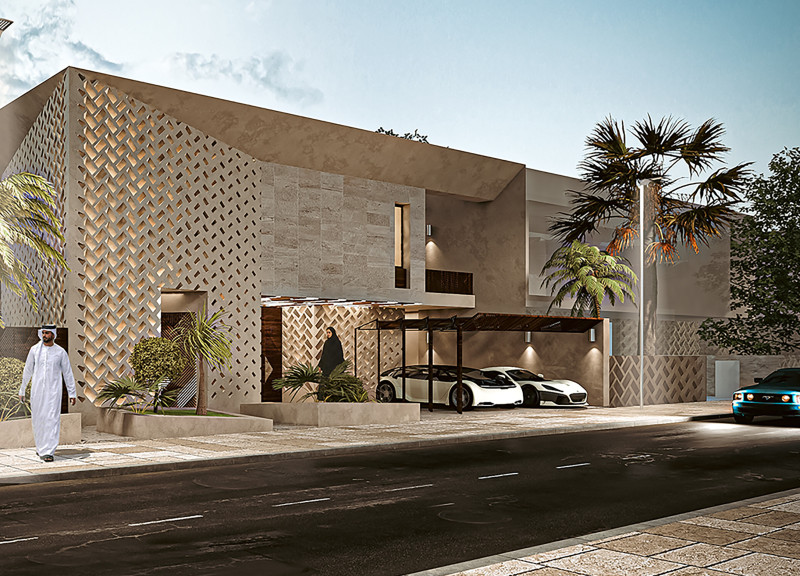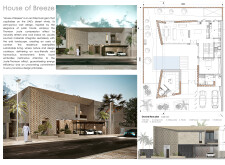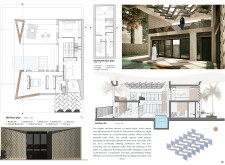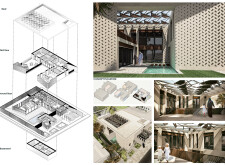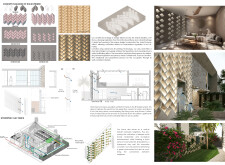5 key facts about this project
# House of Breeze
## Overview
Located in the arid landscape of the United Arab Emirates (UAE), the House of Breeze integrates traditional architectural elements with modern sustainable technologies. The design aims to create a residential space that promotes eco-friendly living while addressing the climatic challenges of the region. Key principles include passive cooling and energy efficiency, achieved through careful consideration of natural ventilation and the thermal properties of materials.
## Spatial Strategy
At the core of the design is a focus on optimizing airflow and natural lighting. The layout employs simple geometric forms, evolving into a complex arrangement centered around a communal patio that encourages family interaction. The building orientation is strategically positioned to take advantage of prevailing winds, fostering a natural cooling effect throughout the interior. This approach promotes not just utility but also a sense of community within the dwelling.
### Key Architectural Elements
The façade features a dynamic composition of solid and void spaces, with semi-porous walls designed to enhance thermal performance. Palm-frond patterns serve both an aesthetic and functional role, facilitating airflow and creating a microclimate. The interior is organized into distinct zones, separating communal and private spaces, which include living areas on the ground floor and bedrooms on the upper level.
## Material Strategy
The House of Breeze utilizes locally sourced stone for external walls, creating a connection with the desert environment. Key materials include 3D printed clay bricks designed to support natural ventilation, and integrated photovoltaic panels on the roof for solar energy generation. Strategically placed glass elements enhance natural light while maintaining connectivity to the external landscape. A hydroponic clay fence not only acts as a biofilter but also contributes to aesthetic value and biodiversity, complementing the sustainable ethos of the project.
### Sustainable Systems
Innovative systems such as the El Malgaf wind-catch are employed to enhance indoor air quality by directing cooler air from upper floors to living spaces below. The commitment to sustainability is further reflected in the integration of renewable energy sources and passive cooling techniques, ensuring minimal energy consumption. The hydroponic clay fence also supports community engagement through vertical gardening initiatives, fostering a sense of collaboration and shared resources among neighbors.


